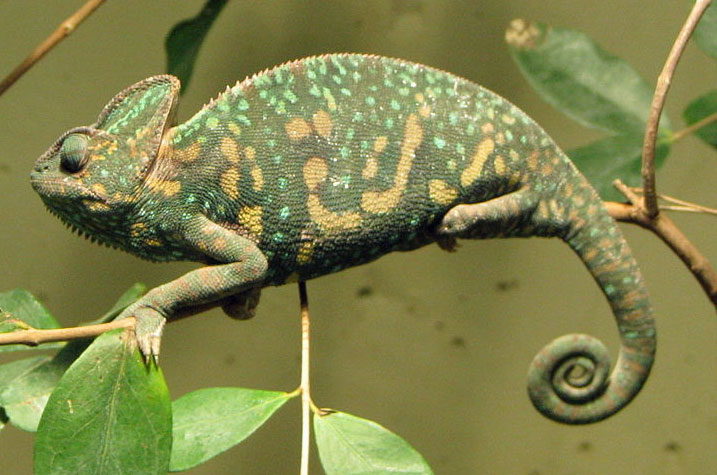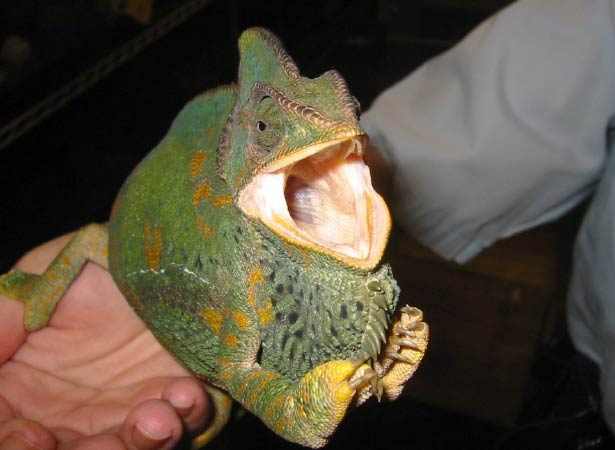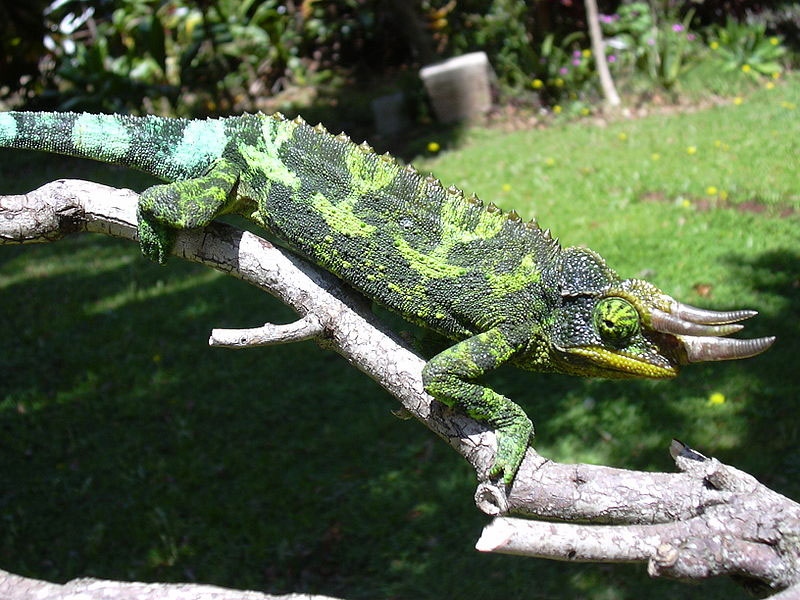Veiled Chameleon
 Veiled chameleon (Chamaeleo calyptratus)
Veiled chameleon (Chamaeleo calyptratus)
Regulatory Status: Hawaii Injurious Wildlife (HAR 124). Hawaii state law prohibits importing or transporting within the state of chameleons, lizards or snakes.
Prevention and Control Category: None
Report this species!
Description
-
 Tree-dwelling (arboreal) chameleons that can grow to about 60 cm (2 ft) long
Tree-dwelling (arboreal) chameleons that can grow to about 60 cm (2 ft) long -
May be strikingly colored (from white to black, gray, brown, green, blue, orange, red, and yellow), and spotted or banded.
-
Have a large casque (sharkfin-like shield) on their head (note that the Jackson’s chameleon, C. jacksonii, is a similar and more common alien species in Hawaii, although male Jackson’s have three horns on their forehead). Have a fringe running from its mouth under its body.
Impacts
- Prey primarily on insects, but will also dine on leaves, flowers and buds, small mammals and birds.
- Veiled chameleons lay eggs (unlike the Jackson’s Chameleon, which bear live young)
- Each female can lay 30 – 95 eggs, three times per year in holes that the female digs in the ground. Eggs take about six months to hatch.
- Veiled chameleons can live four to eight years.
- Veiled chameleons are of concern because of their reproductive capacity, their ability to prey upon native Hawaiian birds and insects, and their adaptability (they are able to tolerate living in areas that vary from dry sea level elevation, to very wet montane areas, up to 12,000 feet elevation). Ecologically, they can function like tree snakes.
Distribution
- Native to Yemen and Saudi Arabia, they were illegally introduced to Hawaii via the pet trade.
-
Kauai: There was a single sighting of a veiled chameleon in 2004. KISC responded but was unable to recover a chameleon.
-
Maui: Populations have been found in Upcountry, and there is concern that pet enthusiasts are illegally spreading them to new locations, in complete disregard to environmental concerns or the law. MISC and partner agencies are working to establish whether existing populations can be controlled.
-
Oahu, Molokai, Big Island: Not known to be present at this time.
Look-alike Species

Jacksonʻs Chameleon (Chamaeleo jacksonii): Males are generally 10-12” long with a long, prehensile tail accounting for half of their length, and with three horns protruding from their forehead. Females are generally a little shorter and never grow horns. THIS SPECIES IS ALSO A PEST!
